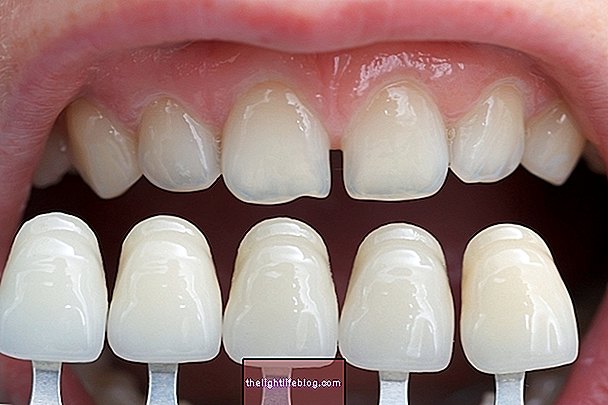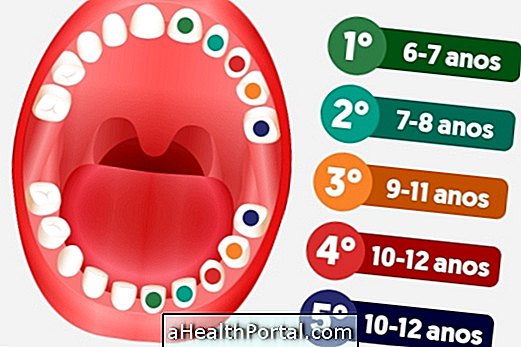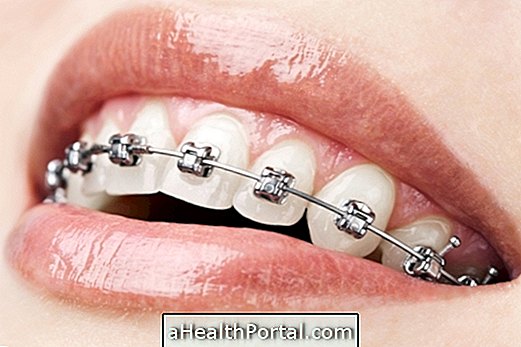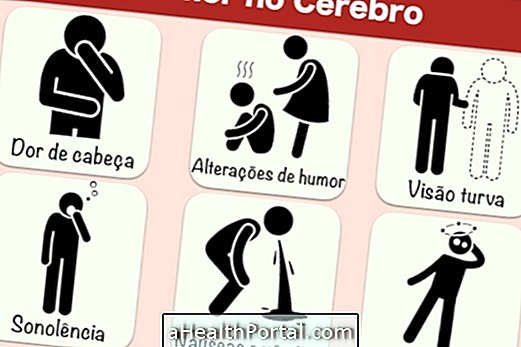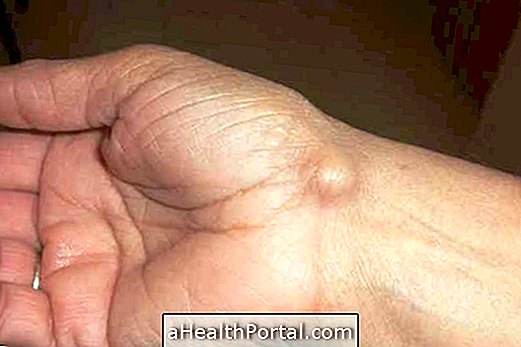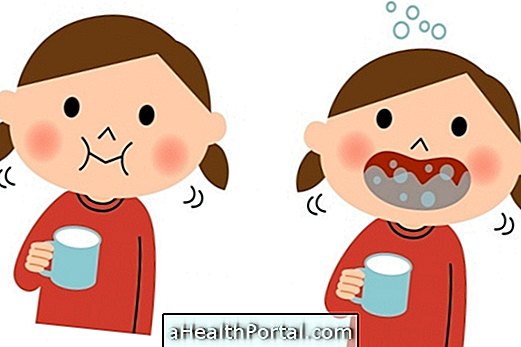The color of the tongue, as well as its shape and sensitivity, may in some cases help identify diseases that may be affecting the body, even if there is no other symptom.
However, because its color can easily change due to the food that is ingested, it is not always easy to identify the disease only by the tongue. Thus, if a disease is suspected, it is important to be alert to other symptoms and consult the general practitioner to make the necessary diagnostic tests and initiate appropriate treatment if necessary.
1. Very red tongue

The tongue is naturally red, however its color may become more intense when there is an increase in body temperature, for example, and therefore may be a sign of some infection or inflammation in the body. In these cases, other symptoms usually appear like fever, general malaise and muscular pains.
In addition, redness of the tongue may also be a symptom of lack of vitamin B12 in the body, since this vitamin is very important for the health of the taste buds. Normally, vegetarians are more prone to have vitamin deficiency, since their concentration is higher in fish meats and other animals. See which foods or supplements you should ingest in these cases.
2. White tongue

When the tongue has a white plaque, it is usually a clear sign of oral candidiasis, which happens when you have poor oral hygiene or when the immune system is more weakened. Thus, candidiasis is more common in children, the elderly or people with autoimmune diseases, for example. In these cases, it is recommended to have adequate oral hygiene and consult a general practitioner to start treatment with antifungal rinses if symptoms do not improve. Learn more about how to treat oral candidiasis.
Already when the tongue is pale, it may be only a sign of cold or indicate anemia, for example, which usually happens due to lack of iron in the body. In these cases, if the tongue remains pale for more than 1 week and excessive tiredness arises, a general practitioner should be consulted for a blood test and the possibility of anemia. Check out how you can cure anemia at home:

3. Yellow or brown tongue

Usually, the yellowish or brownish colored tongue is not a sign of any serious problem, and is in most cases caused by poor mouth hygiene.
In addition, there are people who have papillae that tend to grow more than usual. In these cases, the papillae may pick up small dead tongue cells, which end up being sullied by lifestyle habits such as drinking coffee or smoking, for example, getting a yellow or brown color. These cases do not require specific treatment, improving only with more intense hygiene of the mouth.
It is only in rare cases that the yellow tongue can indicate jaundice, since the first places to have a yellowish color are usually the eyes and even the skin. Jaundice is a sign of liver or gallbladder problems, so consult a hepatologist if you suspect such problems. See a list of symptoms that may indicate liver problems.
4. Purple tongue

The purple tongue is usually a sign of poor circulation on the tongue, but this usually only happens after a strong trauma in the region, such as biting the tongue. Thus, the purple tongue is also usually accompanied by severe pain in the region, swelling and difficulty speaking or eating, for example.
In these cases, it may help to apply a small pebble in place for about 30 seconds and repeat for 5 minutes, with a 30 second interval between each application. If the color of the tongue does not improve in 1 week, or if the symptoms worsen, you should go to the emergency room to identify the problem and start the appropriate treatment.
5. Black tongue

The black tongue is, in most cases, accompanied by the growing sensation of hair on the tongue, which is caused by the excessive growth of the taste buds in some people. When the papillae grow, there is a greater chance of accumulating bacteria and dead cells that eventually darken at the end of time. In these cases, one should only maintain proper oral hygiene.
However, in very rare situations, this color change may also arise in other situations, such as:
- Excessive use of cigarettes;
- Treatments for cancer with radiation;
- Frequent intake of black tea or coffee;
- Decreased production of saliva;
- Dehydration;
- HIV.
Therefore, if the black tongue does not improve with the correct hygiene of the mouth or other symptoms appear, a general practitioner should be consulted to identify the cause and initiate the most appropriate treatment.

